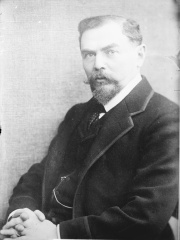
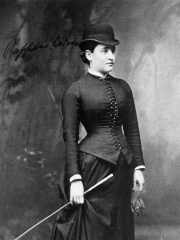
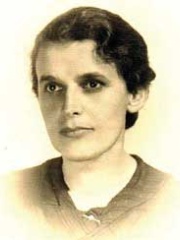
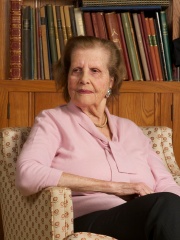
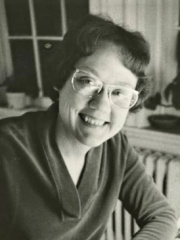
The Most Famous
SOCIAL ACTIVISTS from Austria
This page contains a list of the greatest Austrian Social Activists. The pantheon dataset contains 840 Social Activists, 6 of which were born in Austria. This makes Austria the birth place of the 34th most number of Social Activists behind North Korea, and Netherlands.
Top 6
The following people are considered by Pantheon to be the most legendary Austrian Social Activists of all time. This list of famous Austrian Social Activists is sorted by HPI (Historical Popularity Index), a metric that aggregates information on a biography's online popularity.

1. Alfred Hermann Fried (1864 - 1921)
With an HPI of 74.05, Alfred Hermann Fried is the most famous Austrian Social Activist. His biography has been translated into 54 different languages on wikipedia.
Alfred Hermann Fried (German pronunciation: [ˈʔalfʁeːt ˈhɛʁman ˈfʁiːt]; 11 November 1864 – 4 May 1921) was an Austrian Jewish pacifist, publicist, journalist, co-founder of the German peace movement, and winner (with Tobias Asser) of the Nobel Peace Prize in 1911. Fried was also a supporter of Esperanto. He is the author of an Esperanto textbook and an Esperanto-German and German-Esperanto dictionary, first published in 1903 and republished in 1905.

2. Bertha Pappenheim (1859 - 1936)
With an HPI of 67.36, Bertha Pappenheim is the 2nd most famous Austrian Social Activist. Her biography has been translated into 23 different languages.
Bertha Pappenheim (27 February 1859 – 28 May 1936) was an Austrian-Jewish feminist, a social worker pioneer, and the founder of the Jewish Women's Association (Jüdischer Frauenbund). Under the pseudonym Anna O., she was also one of Josef Breuer's best-documented patients because of Sigmund Freud's writings on Breuer's treatment of her.

3. Diana Budisavljević (1891 - 1978)
With an HPI of 62.21, Diana Budisavljević is the 3rd most famous Austrian Social Activist. Her biography has been translated into 20 different languages.
Diana Budisavljević (née Obexer; 15 January 1891 – 20 August 1978) was an Austrian humanitarian who led a major relief effort in Yugoslavia during World War II. From October 1941, on her initiative and involving many co-workers, she organized and provided assistance to women and children who were mostly Serbian Orthodox detained in the Ustaše camps in the Independent State of Croatia, a Nazi puppet state established in occupied Yugoslavia. The operation, known as "Action Diana Budisavljević", succeeded in saving around 10,000 children. After her story was better publicized in the 2000s and 2010s, she received substantial posthumous recognition.

4. Maria Altmann (1916 - 2011)
With an HPI of 60.74, Maria Altmann is the 4th most famous Austrian Social Activist. Her biography has been translated into 19 different languages.
Maria Altmann (née Maria Victoria Bloch, later Bloch-Bauer; February 18, 1916 – February 7, 2011) was an Austrian-American Jewish refugee from Austria, who fled her home country after it was annexed to the Nazi’s Third Reich. She is noted for her ultimately successful legal campaign to reclaim from the Government of Austria five family-owned paintings by the artist Gustav Klimt that were stolen by the Nazis during World War II.
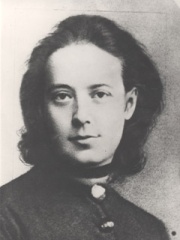
5. Marianne Hainisch (1839 - 1936)
With an HPI of 58.92, Marianne Hainisch is the 5th most famous Austrian Social Activist. Her biography has been translated into 24 different languages.
Marianne Hainisch, born Marianne Perger (25 March 1839 – 5 May 1936) was the founder and leader of the Austrian women's movement. She was also the mother of Michael Hainisch, the first President of Austria (1920–1928).

6. Barbara Gittings (1932 - 2007)
With an HPI of 45.12, Barbara Gittings is the 6th most famous Austrian Social Activist. Her biography has been translated into 16 different languages.
Barbara Gittings (July 31, 1932 – February 18, 2007) was an American LGBTQ activist. She started the New York chapter of the Daughters of Bilitis (DOB) in 1958, edited the national DOB magazine The Ladder from 1963 to 1966, and worked closely with Frank Kameny in the 1960s on the first picket lines that brought attention to the ban on employment of gay people in the United States government, the largest employer of the country at the time. In the 1970s, Gittings was most involved in the American Library Association, especially its Task Force on Gay Liberation, in order to promote positive literature about homosexuality in libraries. She was a part of the movement to get the American Psychiatric Association to drop homosexuality as a mental illness in the early 1970s. She was awarded an American Library Association Honorary Membership, and the ALA named an annual award for the best LGBTQ novel the Stonewall Book Award-Barbara Gittings Literature Award. GLAAD also named an activist award for her.
People
Pantheon has 6 people classified as Austrian social activists born between 1839 and 1932. Of these 6, none of them are still alive today. The most famous deceased Austrian social activists include Alfred Hermann Fried, Bertha Pappenheim, and Diana Budisavljević.
Deceased Austrian Social Activists
Go to all RankingsAlfred Hermann Fried
1864 - 1921
HPI: 74.05
Bertha Pappenheim
1859 - 1936
HPI: 67.36
Diana Budisavljević
1891 - 1978
HPI: 62.21
Maria Altmann
1916 - 2011
HPI: 60.74
Marianne Hainisch
1839 - 1936
HPI: 58.92
Barbara Gittings
1932 - 2007
HPI: 45.12
Overlapping Lives
Which Social Activists were alive at the same time? This visualization shows the lifespans of the 6 most globally memorable Social Activists since 1700.

